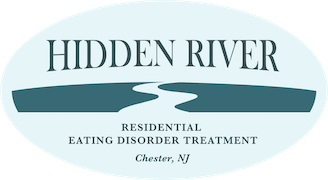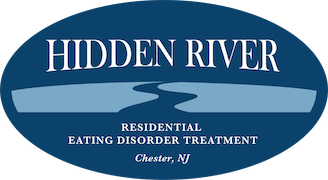Nasogastric Feeding Tubes in Eating Disorder Treatment: Recovery With Compassionate Medical Care
In eating disorder treatment, the patient’s psychological and physical safety are both the starting point and the throughline.
When Oral Intake Isn’t Enough
Medical stability and nutrition rehabilitation are a primary focus of treatment at the Inpatient and Residential levels of care. Medical stability is key to sustaining life, while nutrition rehabilitation is key to regaining the ability to achieve one’s purpose of living a high-quality life full of meaning. Sometimes, despite putting forth genuine effort, a person’s ability to consume the necessary volume of nutrition falls short and risks medical stability. This situation can arise when someone’s nutrition intake remains below what their body requires for safe restoration.
The use of a nasogastric (NG) tube is a short-term intervention designed when other self-directed oral nutritional intake approaches haven’t been successful in meeting the body’s needs. Nasogastric feeding works by supplementing the missing oral intake requirements, not replacing it entirely. This allows the body to receive the full nutrition necessary for healing while keeping meals manageable. The goal is always to provide this nutritional support temporarily, creating the stability needed for continued progress in treatment.
Why Nourishing the Body Can Feel So Complex
Recovery asks a lot of the body. During restoration, individuals often become hypermetabolic, meaning the body requires significantly more nutrition than usual to repair systems affected by caloric restriction. This biological reality means the necessary volume of food needed for healing can feel genuinely overwhelming, even with a strong sense of willpower. One’s physiology can limit the volume of food which can be consumed through oral intake.
Beyond the physical demands of restoration, recovery also involves significant emotional and psychological changes. It involves letting go of familiar patterns and learning new coping strategies. The routines that provided daily structure, the ways someone learned to manage emotions, and the sense of control of the disorder offered all change through treatment. These changes can create uncertainty about one’s identity and how to manage daily life. The body often responds to these changes with physical sensations before and after meals, such as agitation, nausea, headaches, mood swings, muscle tension, and impulsive behavior. One’s self talk may be persistently negative and conflictual as well. Irrational thoughts of self deprivation, anger, self-harm, or rage are common.
These responses are completely normal, given the magnitude of what’s happening to gain recovery. The mind and body will face significant discomfort as they move towards healing. Use of nasogastric feeding can be an important intervention to alleviate some of the physical and psychological stress that will be experienced. For parents, understanding this complexity helps explain why recovery isn’t straightforward. When consuming meals becomes difficult, or when progress becomes stagnant, it’s often because the physical, emotional and psychological work itself is very demanding.
Supplemental Feeding Through Nasogastric Feeding
Professional support recognizes this reality and provides both medical intervention, emotional support, and psychological guidance to make the process more manageable. This is why supplemental feeding in the use of nasogastric feeding can be valuable. It addresses the very real challenge of meeting a person’s nutrition requirements, when oral intake alone falls short.
While nasogastric feeding tubes are most commonly used in the treatment of anorexia nervosa, they have at times been used in cases of bulimia nervosa or avoidant/restrictive food intake disorder (ARFID), depending on the severity of medical or nutritional compromise. Regardless of diagnosis, nourishing the body is one of the first goals in eating disorder treatment when someone is medically compromised.
Care and Collaboration at Hidden River
At Hidden River, every decision about the use of nasogastric feeding is guided by our commitment to safety, transparency, and respect for each individual’s unique needs. We understand that this intervention represents a significant step, and our approach prioritizes collaboration with both families and the people in our care.
Our philosophy recognizes that individual factors play an important role in treatment planning. We tailor our approach to honor each person’s circumstances, ensuring that medical interventions are implemented in the most supportive way possible. The recommendation for nasogastric feeding is made by our program’s medical doctors only after thorough evaluation by the Registered Dietitian, attending physician, nursing staff and therapist. Placement is performed by experienced nursing staff with a physician present and followed up with an X-ray confirmation to ensure proper positioning.
Informed Consent and Transparency
A nasogastric tube will only be placed upon request with informed consent from the qualified adult, or in the case of a youth or adolescent, both the youth or adolescent and their parent or guardian. In the case of a youth or adolescent, this dual consent ensures that the young person’s voice is heard and respected in the decision-making process.
We prioritize clear communication throughout. All parties involved will receive detailed information about how the tube will be used, whether continuously or as needed, and how it integrates with the broader treatment plan. These conversations happen collaboratively, allowing space for questions and time to process.
The Benefits of Residential Care
In our residential setting, nasogastric feeding tubes are placed on site. This allows individuals to remain in their therapeutic environment, surrounded by the same providers who have supported their treatment all along.
Medical care remains connected to emotional care, happening within familiar routines, trusted relationships, and an integrated team. This continuity reinforces that nasogastric tube feeding is simply another form of support within the ongoing treatment process.
Nasogastric Feeding is a Bridge
Falling short of the required nourishment makes it significantly harder, if not impossible, to participate in therapy, regulate emotions, or access the kinds of insight needed for psychological growth. It can also be life threatening. Nutrition affects mood, concentration, cognitive flexibility, and relational interactions — all of which are critical to recovery. When someone’s body has the nutrition it needs, the therapeutic work becomes progressively more possible.
This is why interventions like nasogastric feeding tubes can serve as a bridge to recovery. A person’s journey is supported by many resources, and for some, a nasogastric feeding tube is one part that makes continued healing possible. It can reduce immediate risk, relieve physical strain, and allow the rest of treatment to keep moving forward. It matters that the treatment resources and professional care remains connected to the person at the center of it, and that each decision is made with clarity, compassion, and the long view of recovery in mind.
Eating Disorder Recovery Is Possible
Recovery is possible. Living a high quality life is available to you. The treatment process will be challenging, and you can find success through it. You will meet many staff and other girls and young women who will show you the way. They will be there when you need them most.
Recovery is about creating the conditions where healing occurs. Hidden River, provides a safe, calm environment supported by expert and caring physicians, nurses, therapists and dietitians who will provide medical, psychological and nutritional care that prepares you for everything recovery has to offer.
To learn more about Hidden River, visit our website or contact us at info@hiddenriverhealing.com.





Leave a Reply
You must be logged in to post a comment.